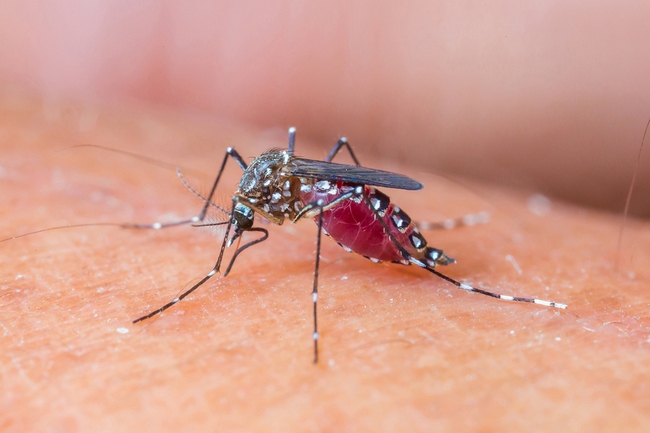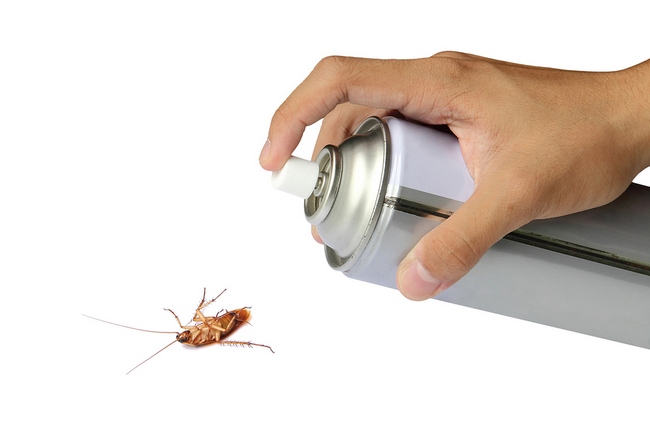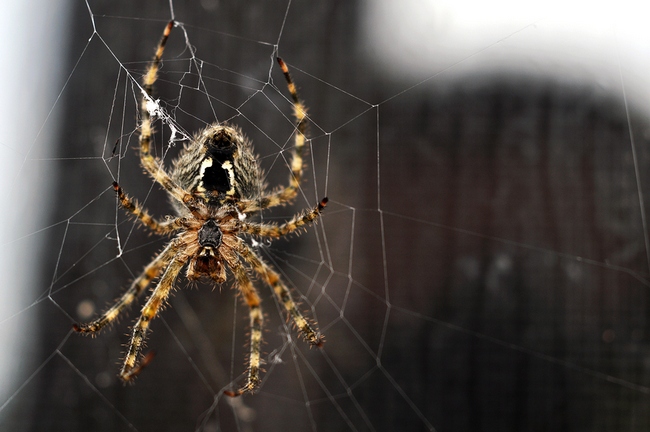- Make It Yourself Lavender Heart-Shaped Bath Bombs!
- 20 Things You Never Knew About “Down There”
- 12 Best Foods For Those Suffering From Arthritis Pain
- 12 Personal Hygiene Mistakes Almost Everyone Makes (Mom Never Told You About #4!)
- 15 Medicinal Plants And Herbs From The Cherokee People
- 12 Mind-Blowing Benefits Of Drinking Coconut Water During Pregnancy
- 12 Outstanding Winter Foods That Won’t Fatten You Up Like A Christmas Turkey
DIY Insect Traps: No Chemicals, No More Bugs, No Diseases!

Photo credit: bigstock
Summertime is just about done but bugs still abound, especially those darn mosquitoes. The worst thing about mosquitoes, more than the buzzing noise at night and itching from bites, is the fact that they carry diseases. Dengue fever is common in many other countries. Brazil has been in an almost constant state of emergency for the past two years due to dengue fever with more than 570 deaths from this disease in 2013. In fact the situation there is so serious that they have built an entire biotech factory in Campinas, Brazil, in order to create millions of genetically modified mosquitoes that will mate with the “native” female mosquitoes and produce offspring that will die before they become adults.
Besides mosquitoes, there are numerous other insects that cause us problems or are just plain annoying such as horseflies and wasps. However, you don’t want to use any dangerous or toxic chemicals around the house and definitely not around your children, so what can you do?
Take a look at the top DIY (Do-It-Yourself) all natural insect traps that can help keep your family safe and insect free this summer and next summer!
1. Mosquito Traps
As we mentioned, not only are these little stinkers annoying, they carry a wide range of illnesses from dengue fever, to West Nile virus, to malaria, depending on where they are located. Electronic bug zappers work pretty well but they are, well, let’s be honest, they are just too gross to put to work inside the house and the really big ones can also zap your electric bill. If you are looking for some short term protection (such as working in the garden for an hour or so), you can try burning some green cedar or pine tree branches. The smoke should keep them at bay for a short time anyway. But try making some of these plastic soda bottle traps and place them around your yard and inside bedroom areas. The bait inside will need to be replaced about every two weeks so make them easy to reach.
Save a few two liter plastic bottles. Cut off the tops and turn the tops upside down so that the drinking part is now facing towards the bottom of the bottle. Then, mix up the following:
1 Cup of sugar
1 Cup of very warm water
1 cup of water at room temperature
1 Teaspoon of active dry yeast
Mix the sugar and hot water, then stir in the yeast. Once it starts bubbling, pour it into the bottle along with the extra cup of room temperature water. Cover it loosely with some plastic wrap or a plastic bag and put it in a warm, dark place for about 48 hours. Then, place the bottle where mosquitoes like to hang out. This is a safe mixture even for your kid’s rooms, but you might want to keep it out of reach of very young children so they don’t decide to play with their new, dead, mosquito friends. (Ewwwww)
Continue to Page 2
2. Spiders
Most spiders are harmless to humans and beneficial to the garden. However, there are some spiders that are venomous, and some people can’t stand the sight of spiders inside their house. Most spiders can be successfully removed by placing a cup over them, then sliding a piece of paper under the cup and setting them free outside.
You can start by sealing up cracks and holes around your home. Check the windows, basements, and foundations for places that spiders can enter your home and seal them off. Spiders have something like taste buds on their feet and legs. They can be super sensitive to certain smells so mix up this little remedy and spray it in places where you usually find spiders in your home and around your patio. This should convince them to find more pleasant living arrangements.
In a medium sized spray bottle, mix up 2 cups of water, a squirt of dish soap, and 10 or 15 drops of strong smelling essential oil such as lavender, lemon, citronella, or tea tree. Mix this up and spray it liberally where you see cobwebs, spiders, around your patio, and under sinks. This spray is safe enough to use anywhere, but remember to spray regularly to keep the scent strong.
SEE ALSO: 12 Tips to Protect Yourself from Bug Bites
3. Wasps
We all know that pollinators are important for our food productions but there are also people who are deathly allergic to bee stings (this includes wasps!) At least bees only sting one time after they feel they have been seriously threatened, but wasps, well, they are the insect that just keeps stinging and it hurts so much more than a bee sting ever could! When wasps are around your property in great numbers, they can be dangerous to your family and pets.
First, be on the lookout for nests. If you don’t have any, think about hanging up a few fake nests made of plastic. Wasps are very territorial and they won’t make a nest or hang around if they think someone else has already staked a claim. If you should find nests, even the beginning of a nest, wait until dusk, when wasps aren’t as likely to fly, and douse the nests with a very strong jet of water. Knock the nest and its inhabitants to the ground and drown them all.
If none of these measures work, make a trap.
Take an empty, clear, 2 liter plastic bottle. Cut the top off the bottle and coat the inside of the bottle with a bit of cooking oil. This will keep the wasps from climbing out. Put the spout (the drinking end) of the bottle upside down inside the bottom half of the bottle. Tape it in place with a bit of packing tape. Punch a few holes in sides of the bottle for hanging. You can use an ice pick or hole punch and then run some twine or wire through the holes. Pour two or three inches of soda pop or juice into the bottom of the trap. Wasps and hornets will fly into the small drinking hole to get to the juice but they can’t find their way out and they drown. Hang the bottle far away from places where children play or pets sleep as it’s sure to draw quite a few wasps.
Continue to Page 3

Photo credit: bigstock
4. Cockroaches
These disease little carrying pests just love to come out in the warm nighttime weather. They can live off of specks of food so tiny that you can’t see them, but they can! They aren’t as hard to get rid of as you might think. The same bottle method that works for wasps and mosquitoes, works for cockroaches too. Cut off the top of a 2 liter bottle like you did for wasps. Grease up the inside of the bottle really well as cockroaches can climb like crazy. This time, use fruit juice flavors such as strawberry, mango, or papaya as these tend to work better than citrus juices when it comes to cockroaches. Put the bottle in a dark area near a source of water, such as under the kitchen or bathroom sink or behind the refrigerator.
Another trick is to use double stick carpet tape along the back walls of cupboards or behind appliances, any place you think cockroaches are running by. The tape will stop them dead in their tracks.
YOU MIGHT ALSO LIKE: Got Bedbugs? How to Find Them and Get Rid of Them!
5. Fruit flies
These are so annoying in your kitchen! It only takes one forgotten banana or a lemon left out on the kitchen counter or in a fruit bowl on a hot day to make what seems like a hundred fruit flies!
First, get rid of any fruit that’s overly ripe and place all other fruit in the frig. Wipe down cabinets, fans, and counters with full strength vinegar (find out other uses of vinegar). When fruit flies have nothing to eat, they will eventually die off. However, if you just can’t stand them even one more day flying around your kitchen, make a trap.
Take a half pint jar or a small bowl and place a bit of fruit or jam on the bottom. Add equal parts of beer or balsamic vinegar and water until the fruit or jam is partially submerged. Add about a half a teaspoon of cooking oil, and then stretch a piece of plastic wrap very tightly across the top. Make sure there are no folds in the plastic; it should be tight as a drum. Hold the plastic in place with a rubber band, then, using a toothpick, poke a few small holes in the plastic wrap. The flies will be seriously hot for that sweet mess under the plastic. They will crawl through the holes to get to it but once inside, they can’t figure out how to get back out. They will soon drown and your kitchen will be pristine once again.
Sources:





























